Ailanthus altissima
Tree-of-heaven, Tree of Heaven, Ailanthus
[ click on any image below to see larger version ]
Family:
Simaroubaceae
Mid-Atlantic bloom time:
May - June
Tree-of-heaven is highly invasive in any disturbed habitat where an opening in the canopy lets in sunlight.
By the combination of its allelopathic foilage, abundant seed production, and spreading through root-suckering,
it is able to out-compete and overwhelm many native plants.
When cut, its bark has an unpleasant odor similar to rancid peanut butter.
Tree-of-heaven also resprouts vigorously when cut, so elimination usually requires timely herbicide application,
either by girdling the tree, applying herbicide and waiting for it to die, or by appying immediately after felling.
It has leaves superfically similar to sumac, but the base of each leaflet has a lobe (or "thumb") on each side,
and there are one or more glands (round dots) beneath each lobe.
Leaflet margins are entire, i.e., not serrated or cut.
In summer, mature trees can easily be spotted by their clumps of ripening fruits in the canopy,
which show light green to orange to red against the darker green foilage.
Originally from eastern China, Tree-of-heaven was introduced from Europe by a Pennsylvania gardener in 1784,
and was made commercially available by 1840.
It has been wildly planted as an ornamental in cities because of its tolerance to pollution and drought.
Tree-of-heaven was the species featured in the 1943 novel A Tree Grows in Brooklyn, by Betty Smith.
5 July 2014
Banshee Reeks Nature Preserve, Leesburg, VA
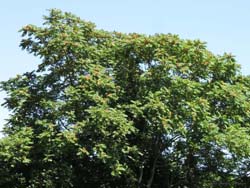
|
30 July 2014
Silver Lake Regional Park, Haymarket, VA
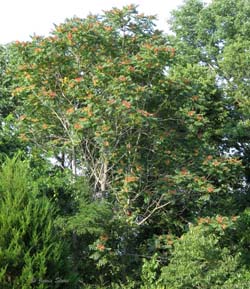
|
5 July 2014
Banshee Reeks Nature Preserve, Leesburg, VA
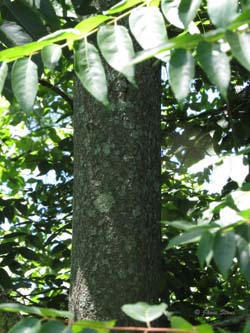
|
24 July 2014
Bristoe Station Battlefield, Manassas, VA
(showing clusters of ripening fruit)
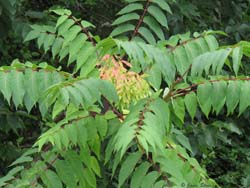
|
5 July 2014
Banshee Reeks Nature Preserve, Leesburg, VA
(showing clusters of ripening fruit)

|
24 July 2014
Bristoe Station Battlefield, Manassas, VA
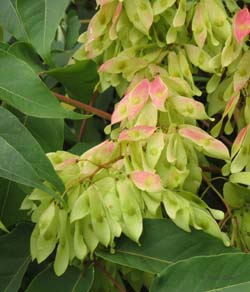
|
|
|
Return to list of flora





